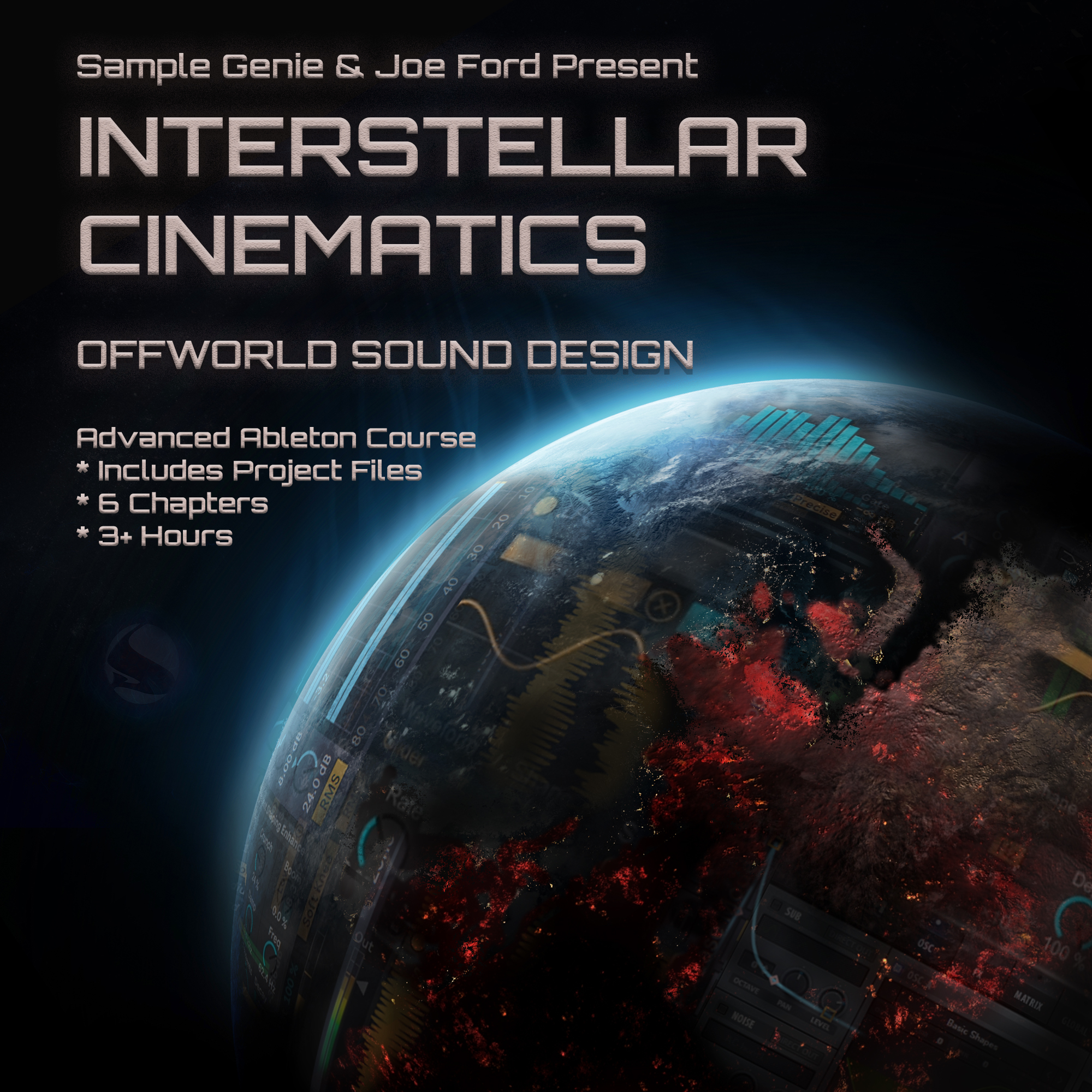Analysis of S2E12: Quadrant – Drum & Breaks Tutorial (June 2015)
- This topic has 0 replies, 1 voice, and was last updated 5 years, 4 months ago by ,
 Harry.
Harry.
-
AuthorPosts
-
-
2019-06-11 at 23:01:20 #83975,
 HarryModerator
HarryModeratorThe final video from Season 2, a two part look at how Quadrant was treating drum breaks back in 2015. I reached out to him to see if his technique has changed much since these videos, I put an update at the bottom of the post. The video covers breaks a bit differently than other artists, Quadrant goes in to the importance of phase relationships.
—
Part 1 (25:32)– Quadrant states there are multiple methods to building drum loops:
– Single hits
– Sampled breaks
– Sample pack loops
– Combining these, using single hits layered over breaks or loops
– Sequencing with MIDI & samplers, or using audio clips00:50 – Quadrant likes to work with breaks (classic ones, or newer ones that have a vintage vibe), and then layer new sounds.
– Chop up the break in Propellerheads ReCycle, sequence in Ableton.01:20 – Picks breaks based on flow, and also listening for clean hits
– Scrolls through Ableton’s sample browser to pick a break to work with for this video02:00 – Picks a break from Jeff Beck – “Come Dancing”
– Says the break has nice swing, clean hats, and is well recorded, so no need to clean up or use denoising to get the break to sound good.02:20 – you can drag audio from Ableton’s sample browser and drop it directly in to ReCycle
03:15 – sets a loop in ReCycle, and then starts adjusting the slice markers
– Aims for clean slice points (zero point crossings), and single hits, no flams or ghost hits
– Finds it easier to adjust in ReCycle than later in DAW
– Manually fixes the loop used for the video05:35 – points out in the audio analyzer that “squiggles indicate high frequency”
– Transient hits06:20 – portion of the break with two hits tight together, adjusts slice markers to get each individual hit
07:15 – checks each slice to hear if he missed anything
08:10 – sets the number of bars in ReCycle, gets a rough BPM
08:25 – demonstrates the Preview button and the extra features it opens up in ReCycle
– Likes the transient module, said it can make hits punchier09:45 – goes over processing chain in his drum bus
– Saturation: container with Saturation plug-in and Strip Pro (not sure what Strip Pro is for, maybe a console strip emulation)
– Parallel compression: container with U-He Presswerk and an EQ
– Glue compression
– Sausage Fattner: this chops peaks without being too harsh sounding10:20 – recommends processing drums through a similar chain to beef them up
11:00 – .RX2 of the break is brought in to Ableton, select’s ‘Slice to New MIDI Track’, and then uses a custom slicing preset
12:05 – goes over the macro knobs set by the custom slicing preset (ADSR controls)
12:40 – goes over the steps to create a slicing preset in Ableton Live
– Insert at Drum Rack
– Load a single audio sample in to a cell on the rack
– Map the macro parameters to the sampler
– On the top bar of the drum rack, name the rack what you want to call the slicing preset
– Drag the Drum Machine to ‘Defaults/Slicing’ folder
– Now, check to see if the preset has been created by dragging audio to a track, select ‘Slice to New MIDI Track’, the new preset should be in the drop down menu
– When you slice and use the preset, the macro knobs should be mapped correctly15:00 – re-sequencing the break
– Quantize the hits, then apply legato to the MIDI notes to remove overlaps of MIDI data
– After this, move hits to resequence17:15 – tightening the hits by adjusting ADSR envelopes
18:10 – parallel compression using the U-He Presswerk compressor
– Sets to the Drum Bus module
– Ratio is 2.3:1, adjust to taste
– Input is turned up a little to clamp on peaks
– Response (which is attack) is adjusted to let some transients through
– Soft Clip set to clip peaks a little
– Saturation set just a little, doesn’t think it is doing much
– Mix set to about 60/40 split, to mix original in with the compressed signal19:50 – finds the compressed version sounds louder, has more grit and sounds more interesting because of the movement of the compressor
20:05 – high passes the break using an EQ, to get kick frequencies out, then layers in single hit kick and snare
20:40 – describes the ids as sounding “wooly”, removes some mud around 200 Hz
21:15 – layering in modern drums, starting with a snare
22:25 – adds a “meaty” kick
23:35 – sidechain compressor on the break, triggered by the modern kick to make it all gel together better, not sound as messy
24:40 – at this point he would consider the break done, can use as is, or bounce to audio to create a new clip, or even move on to writing a bassline
—
Part 2 (16:36)– Felt the break in Part 1 had a wide stereo image, due to the original recording being wide
01:20 – demonstrates stereo imaging
– Have to listen to the video to understand the demonstration06:55 – phase described as the point where a sound starts
– Another demonstration, using a sine and a cosine that are out of phase with each other
– “Changing the phase relationships of the sound will make you perceive it differently when you hear it at the same time as the unaffected sound”
08:50 – showing how to use Waves InPhase plug-in
– “Built to correct & manipulate phase relationships between stereo channels”
– Capture Switch enabled, play a loop of the drums, plug-in ‘listens’ to get a snapshot of the audio09:25 – dial on each channel of InPhase to adjust delay, for time alignment, for sounds in phase but out of sync, e.g. two mics that recorded a sound
09:40 – other tool in InPhase, the all-pass filter, lets all frequencies through but alters phase relationship of the source sound
11:35 – applying these concepts on the break
11:55 – main kick & snare are fine, they are dead center, don’t need any processing
12:10 – work done on the break layer
– EQ with a mid-frequency notch around 2k Hz12:25 – heavily modified stereo image
– Audio Effect Rack with two parallel effect chains affecting the middle and sides13:15 – A/B’s the left and right channels of the break in InPhase
– Can tell each side had been recorded with different mics, in different positions in the room
– Left channel is more splashy & nasal sounding, the right is thumpier & dull
– Decided to accentuate the left channel13:55 – looks at the chain for the sides next
– InPhase and another Waves plug-in called Center, a stereo enhancer plugin
– Center can control volume of mid/center info, and side info, independently
– Turned down Center’s mid channel nearly all the way, and then a slight boost to the side channel
– Aim is to reintroduce some width to the break while also not interferring with the middle channel or causing any phase issues14:40 – A/B’s just the middle, just the sides, and then both together
16:00 – A/B’s all drums playing, with the Audio Effect Rack on, then off
—
UPDATE for JUNE 2019I messaged Quadrant about the video to see if he was still using the same method, or if he had made any changes. He said he has shifted to using Addictive Drums more, or layering AD with breaks. His drum bus has changed a little too, using a more analog sounding compressor in the chain.
"Knowledge kept is knowledge lost." - Bobbito Garcia
-
-
AuthorPosts
- You must be logged in to reply to this topic.


